Potrebujeme váš súhlas na využitie jednotlivých dát, aby sa vám okrem iného mohli ukazovať informácie týkajúce sa vašich záujmov. Súhlas udelíte kliknutím na tlačidlo „OK“.
ASTM E2378-13
Standard Practice for the Recognition of Impaired or Retired Personal Property
Automaticky preložený názov:
Štandardné praktiky pre uznávanie postihnutých alebo vo výslužbe osobnom vlastníctve
NORMA vydaná dňa 15.7.2013
Informácie o norme:
Označenie normy: ASTM E2378-13
Poznámka: NEPLATNÁ
Dátum vydania normy: 15.7.2013
Kód tovaru: NS-45178
Počet strán: 3
Približná hmotnosť: 9 g (0.02 libier)
Krajina: Americká technická norma
Kategória: Technické normy ASTM
Kategórie - podobné normy:
Anotácia textu normy ASTM E2378-13 :
Keywords:
abuse, accountability, depreciation, fair market value, internal controls, property, thresholds, valuations, ICS Number Code 03.100.30 (Management of human resources)
Doplňujúce informácie
| Significance and Use | ||||||
|
5.1 Improves property accountability including avoiding abuse. Systematic depreciation of property generally serves to provide a fair presentation of an entity’s property and financial records for decision makers. Keeping fully depreciated items on the asset records and property management records when they no longer are used as originally intended may be misleading to decision makers and may result in excessive operating cost. Retiring items to administrative control when appropriate improves the efficiency, lowers operating cost without significantly reducing internal controls. |
||||||
| 1. Scope | ||||||
|
1.1 This practice covers guidance as to the proper treatment for accounting and accountability purposes when items are still retained, but need to be recognized as impaired or retired to administrative control. This practice is intended to be used in conjunction with Practice E2279, which provides various principles to improve the effectiveness and efficiency of the property management functions. These include the concepts of materiality, best value, reasonable detail, and reasonable assurance and proper reporting. During the life cycle of property management, appropriate action must be taken at the appropriate time to be in conformance with these principles. The objective, on behalf of the owner, is to maintain property accounting records that adequately represent the actual value of property and for accountability purposes apply the appropriate management and oversight. 1.2 This practice covers the recognition of depreciation of personal property that is critical to a fair representation of the entity’s property and financial records. For instances when items for accounting or property management purposes may no longer serve the purpose that was originally intended, it may be more appropriate to recognize impairments or retire these items for record keeping purposes. 1.3 Generally, entities formally record, account, and inventory personal property that meet certain criteria, as defined by the entity, based upon acquisition cost thresholds, expendability, or useful life policies. Accordingly, entities should establish recurring depreciation cycles so that the property eligible for depreciation is fairly and consistently recorded in the entity’s records in accordance with generally accepted accounting principles. 1.4 The percentage and frequency of depreciation is dependent on such factors as the nature of owned property, its useful life, and the frequency of property use in support of business-type activities of the entity. 1.5 This practice covers accepted practice of proper record keeping actions when items are fully depreciated for accounting purposes and should be retired from the accounting as well as property management purposes when the asset no longer serves the purpose that was intended but still remains on the entities premises or continues to be under some form of control. 1.6 Entities have a responsibility under their internal controls to operate effectively, efficiently, and in a reasonable and responsible manner to provide stakeholders best value as provided in public law, regulations and generally accepted accounting practices. 1.7 This standard is limited to property management functions. This standard does not purport to address tax concerns, if any, associated with its use. It is the responsibility of the user of this standard to establish appropriate internal tax guidelines and to determine the applicability of regulatory or statutory requirements prior to use. |
||||||
| 2. Referenced Documents | ||||||
|
Podobné normy:
Historická
1.1.2014
Historická
15.2.2007
Historická
1.5.2008
Historická
1.5.2007
Historická
1.5.2014
Historická
1.7.2013
Odporúčame:
EviZak - všetky zákony vrátane ich evidencie na jednom mieste
Poskytovanie aktuálnych informácií o legislatívnych predpisoch vyhlásených v Zbierke zákonov od roku 1945.
Aktualizácia 2x v mesiaci !
Chcete vedieť viac informácii ? Pozrite sa na túto stránku.


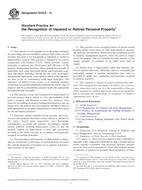
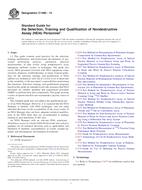 ASTM C1490-14
ASTM C1490-14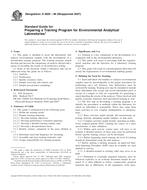 ASTM D5829-96(2007)..
ASTM D5829-96(2007).. ASTM E2159-01(2008)..
ASTM E2159-01(2008)..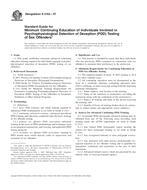 ASTM E2162-07
ASTM E2162-07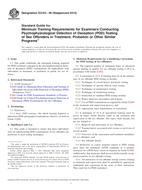 ASTM E2163-06(2014)..
ASTM E2163-06(2014)..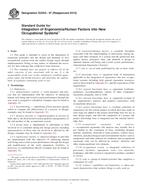 ASTM E2350-07(2013)..
ASTM E2350-07(2013)..
 Cookies
Cookies
